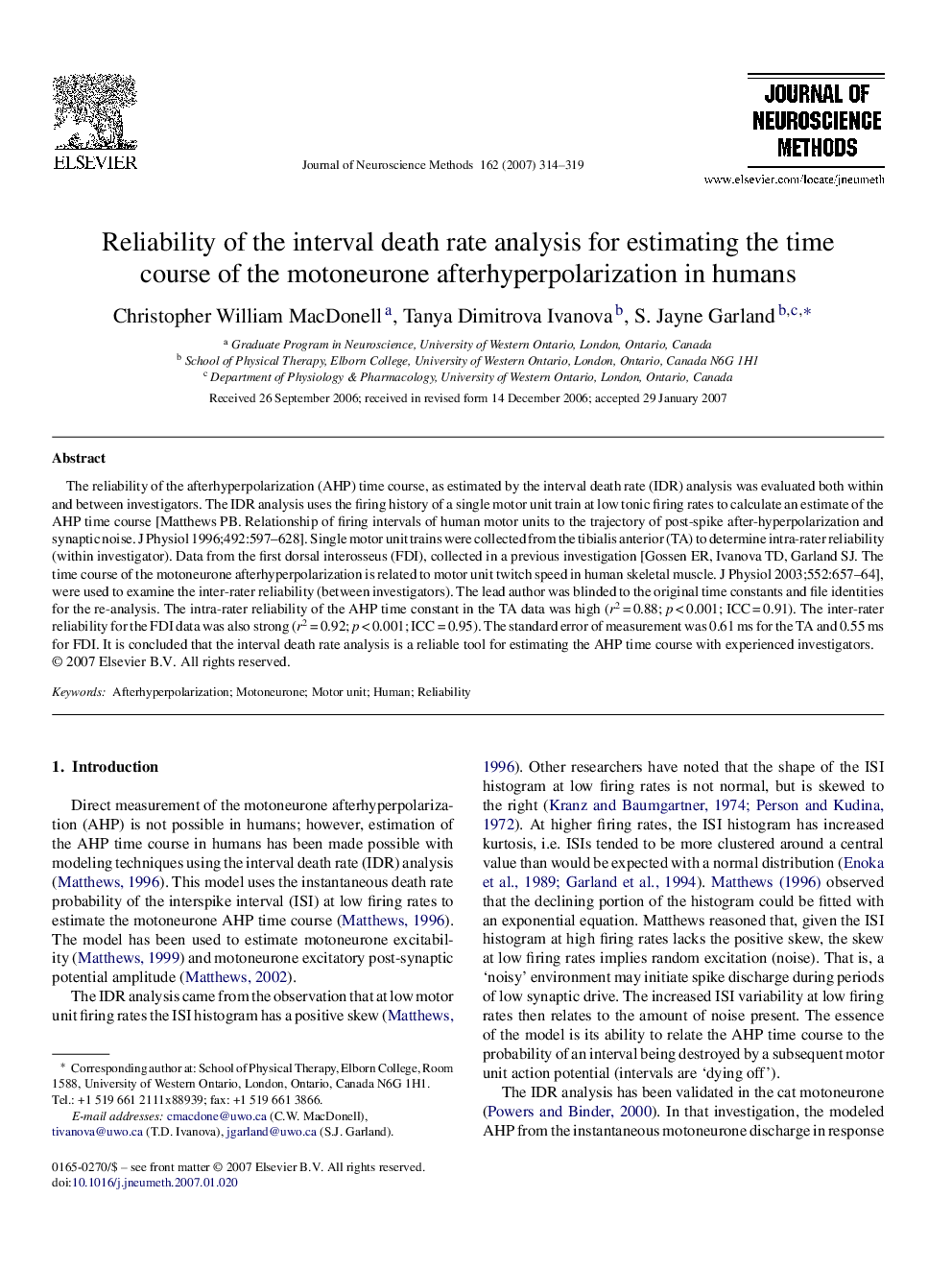| کد مقاله | کد نشریه | سال انتشار | مقاله انگلیسی | نسخه تمام متن |
|---|---|---|---|---|
| 6270504 | 1614656 | 2007 | 6 صفحه PDF | دانلود رایگان |
عنوان انگلیسی مقاله ISI
Reliability of the interval death rate analysis for estimating the time course of the motoneurone afterhyperpolarization in humans
دانلود مقاله + سفارش ترجمه
دانلود مقاله ISI انگلیسی
رایگان برای ایرانیان
کلمات کلیدی
موضوعات مرتبط
علوم زیستی و بیوفناوری
علم عصب شناسی
علوم اعصاب (عمومی)
پیش نمایش صفحه اول مقاله

چکیده انگلیسی
The reliability of the afterhyperpolarization (AHP) time course, as estimated by the interval death rate (IDR) analysis was evaluated both within and between investigators. The IDR analysis uses the firing history of a single motor unit train at low tonic firing rates to calculate an estimate of the AHP time course [Matthews PB. Relationship of firing intervals of human motor units to the trajectory of post-spike after-hyperpolarization and synaptic noise. J Physiol 1996;492:597-628]. Single motor unit trains were collected from the tibialis anterior (TA) to determine intra-rater reliability (within investigator). Data from the first dorsal interosseus (FDI), collected in a previous investigation [Gossen ER, Ivanova TD, Garland SJ. The time course of the motoneurone afterhyperpolarization is related to motor unit twitch speed in human skeletal muscle. J Physiol 2003;552:657-64], were used to examine the inter-rater reliability (between investigators). The lead author was blinded to the original time constants and file identities for the re-analysis. The intra-rater reliability of the AHP time constant in the TA data was high (r2 = 0.88; p < 0.001; ICC = 0.91). The inter-rater reliability for the FDI data was also strong (r2 = 0.92; p < 0.001; ICC = 0.95). The standard error of measurement was 0.61 ms for the TA and 0.55 ms for FDI. It is concluded that the interval death rate analysis is a reliable tool for estimating the AHP time course with experienced investigators.
ناشر
Database: Elsevier - ScienceDirect (ساینس دایرکت)
Journal: Journal of Neuroscience Methods - Volume 162, Issues 1â2, 15 May 2007, Pages 314-319
Journal: Journal of Neuroscience Methods - Volume 162, Issues 1â2, 15 May 2007, Pages 314-319
نویسندگان
Christopher William MacDonell, Tanya Dimitrova Ivanova, S. Jayne Garland,